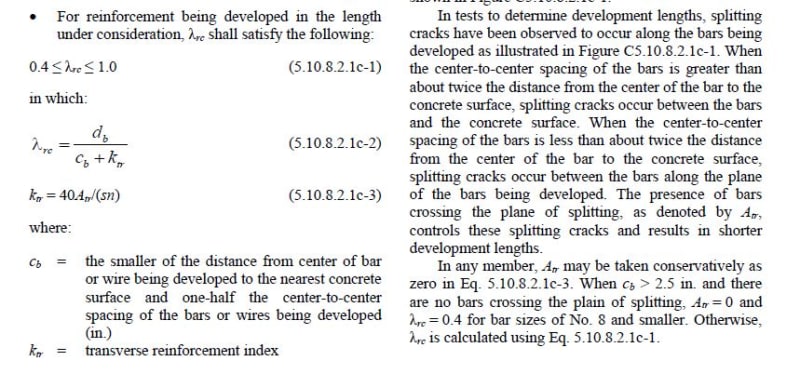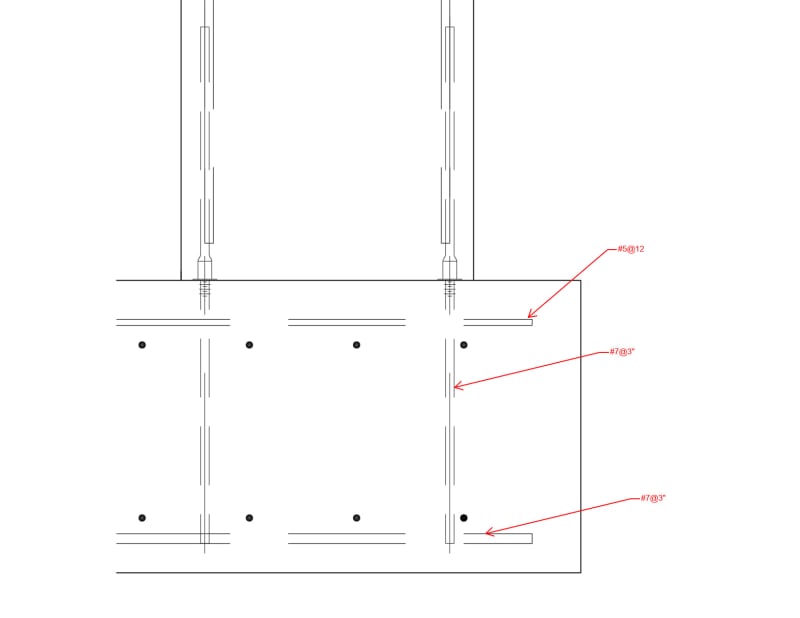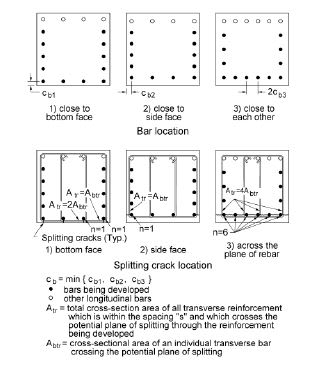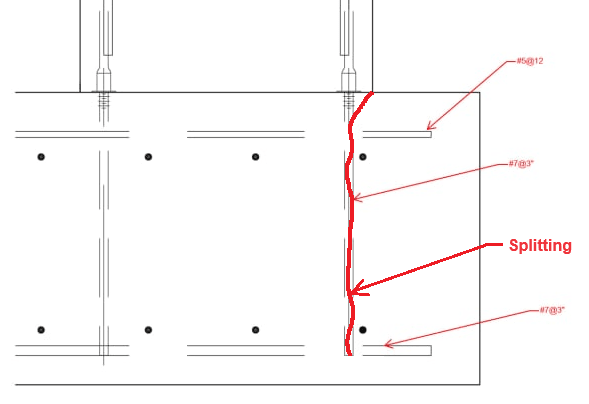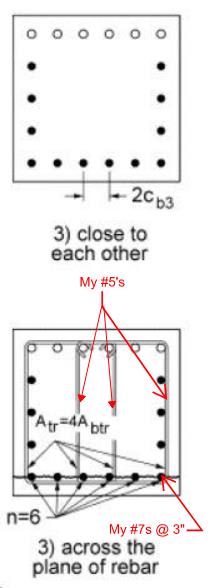JStructsteel
Structural
- Aug 22, 2002
- 1,430
For development lengths of bars that are spaced close together (3"o.c.) what do you consider confinement reinforcement crossing plane of splitting? (ACI 318-14, 25.4.2.3)
I have some #7 bars doweled into a footing. The transverse steel meshes in btween the dowels (top and bottom), and thus steel is crossing the plane of splitting. My edge distance from the dowels to the side of the footing is about 10". Would you consider the transverse bars to be effective to count in the calc? Would you want to see them developed at the edge of the footing?
I have some #7 bars doweled into a footing. The transverse steel meshes in btween the dowels (top and bottom), and thus steel is crossing the plane of splitting. My edge distance from the dowels to the side of the footing is about 10". Would you consider the transverse bars to be effective to count in the calc? Would you want to see them developed at the edge of the footing?





